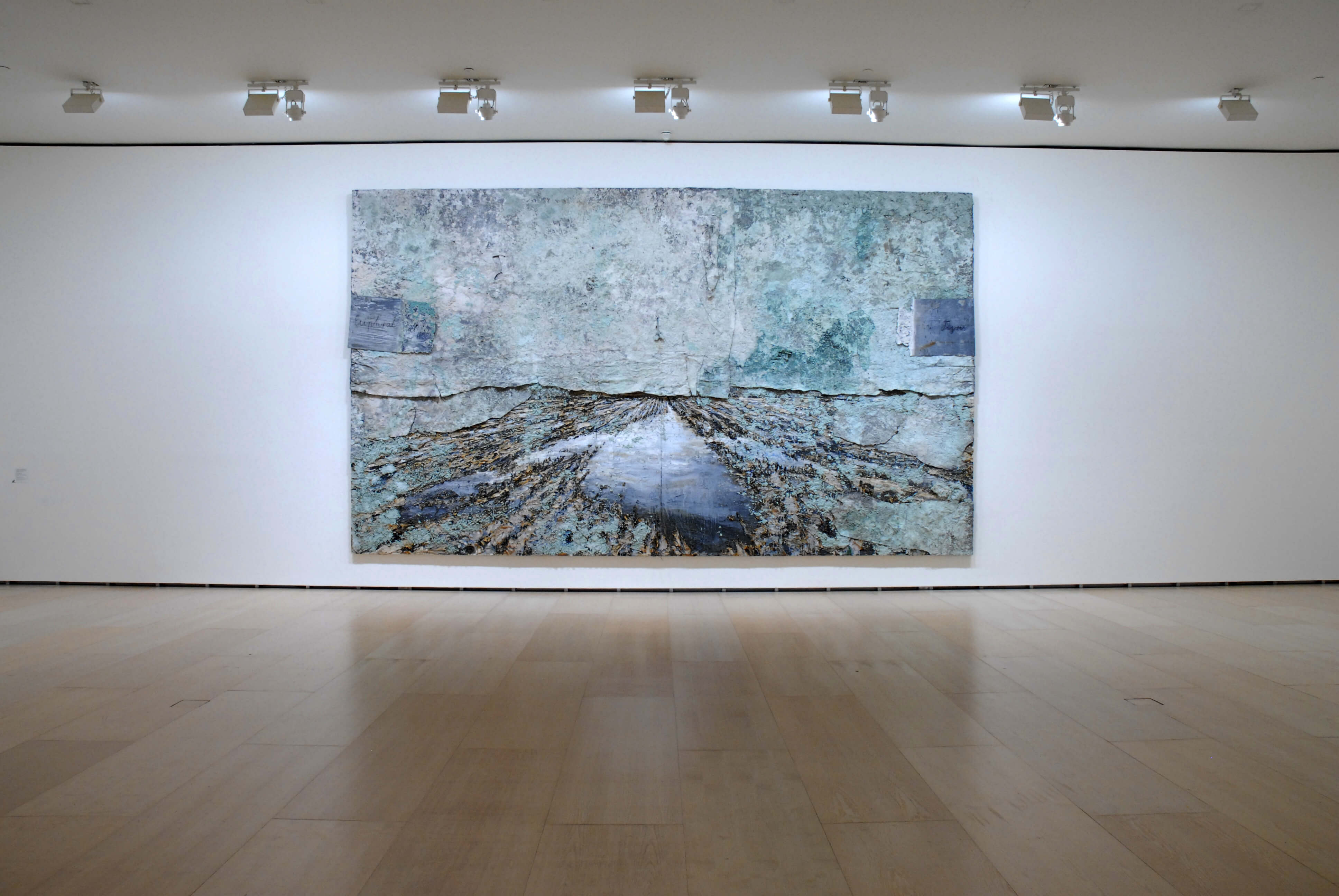The Land of the Two Rivers
1995Emulsion, acrylic, lead, salt through electrolysis and zinc plates-condenser, on canvas416 x 710 cm
Born in Germany just months before the final European battle of World War II, Anselm Kiefer grew up witnessing the results of modern warfare and the division of his homeland. He also experienced the rebuilding of a fragmented nation and its struggle for renewal. Kiefer dedicated himself to investigating the interwoven patterns of German mythology and history and the way they contributed to the rise of Fascism. He confronted these issues by violating aesthetic taboos and resurrecting sublimated icons. In one of his earliest projects, his 1969 Occupations (Besetzungen) series, Kiefer photographed himself mimicking the Nazi salute at various sites during a journey through Switzerland, France, and Italy. Subsequent paintings—immense landscapes and architectural interiors, often encrusted with sand and straw—invoke Germany's literary and political heritage; references abound to the Nibelung legends and Richard Wagner, Albert Speer's architecture, and Adolf Hitler. Beginning in the mid-1980s, and especially following his move to southern France in the early 1990s, Kiefer's iconography expanded to encompass more universal themes of civilization, culture, and spirituality, drawing upon such sources as the Kabbalah, alchemy, and ancient myth.
The Land of the Two Rivers (Zweistromland, 1995) refers to the land delimited by the Euphrates and Tigris rivers-the site of ancient Babylonia, home to Gilgamesh (whose legend Kiefer explores in Gilgamesh and Enkidu in the Cedar Forest II [Gilgamesch und Enkidu im Zedernwald II, 1981], also in the Guggenheim Museum Bilbao collection), and a region central to both Judaism and Christianity. This was also where the Sumerians invented writing in the fourth millennium BCE. Kiefer's painting evokes the land, its civilizations, and the establishment of written culture. The title might be seen as an allusion to the written word itself, which leaves a lasting mark that transcends civilizations and eras. This monumental work was preceded by a sculpture of the same name, comprising several lead books that convey a sense of the enduring nature of the written word and history.
Source(s):
Nancy Spector. "Anselm Kiefer." In Spector, ed. Guggenheim Museum Collection: A to Z. 3rd rev. ed. New York: Guggenheim Museum, 2009.
Miguel López-Remiro. "Anselm Kiefer." In Guggenheim Museum Bilbao Collection. Bilbao: Guggenheim Museum Bilbao; Madrid: TF Editores, 2009.
"Anselm Kiefer." In The Permanent Collections of the Guggenheim Museums. Bilbao: Guggenheim Museum Bilbao, 2007.
Original title
Zweistromland
Date
1995
Medium/Materials
Emulsion, acrylic, lead, salt through electrolysis and zinc plates-condenser, on canvas
Dimensions
416 x 710 cm
Credit line
Guggenheim Bilbao Museoa
Resources
At the Museum











